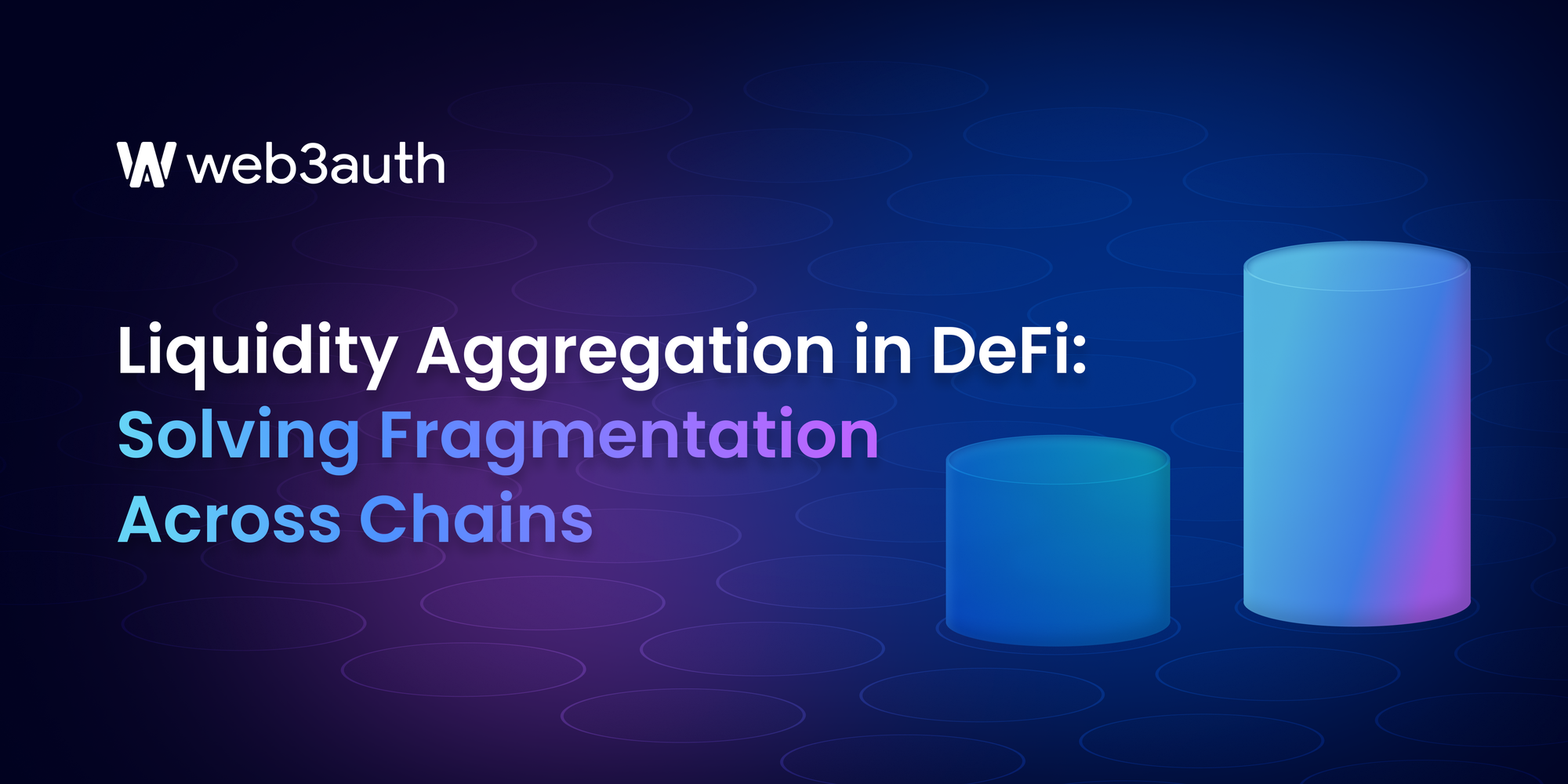On this page
Back when each country in Europe had its own currency, traveling across borders meant having to exchange your money every time you entered a new country. This process was costly due to currency exchanges charge fees, and it was inconvenient because you’d lose time and money with every transaction.
Then came the euro—a single currency that united many European nations. With the euro, people could travel and trade freely across borders without constantly exchanging currencies. This shift reduced transaction costs, boosted economic efficiency, and simplified cross-border travel, making Europe a more cohesive and accessible region.
The funny thing about history is its tendency to repeat itself, which brings us to our current liquidity fragmentation issue in Web3.
What is liquidity fragmentation?
Each blockchain has its own unique protocols, token standards, and liquidity pools, which makes assets relatively inaccessible across chains without bridging solutions. As a result, liquidity often becomes fragmented across different chains, limiting trading, lending, and staking opportunities. This fragmentation presents several issues:
- Smaller, Isolated Liquidity Pools: Since liquidity is siloed on each chain, users face restricted access to a larger market, often resulting in lower liquidity levels, which can limit trading and borrowing capacity.
- Increased Slippage and Trading Costs: Low liquidity can cause higher slippage—the difference between the expected and executed trade prices. This is particularly impactful for larger trades and results in higher transaction costs for DeFi users.
- Complicated Cross-Chain Management: Managing assets across chains involves using bridges or custodians, adding complexity, costs, and sometimes security risks, especially given that cross-chain bridges have been targets of major hacks.
This fragmentation had a very real impact back in February 2022: Wormhole, a blockchain bridge which connects Ethereum and Solana, suffered a hack resulting in over $320 million in losses and highlighted the security challenges associated with relying on cross-chain bridges for liquidity management.
Key Players in Liquidity Aggregation
Liquidity aggregation is reshaping DeFi by creating a unified liquidity pool accessible across chains. This approach has numerous benefits, including better pricing for traders, more accessible DeFi services, and improved capital efficiency. Here are some of the key players in this space:
1. Thorchain
Thorchain is a protocol built specifically to enable cross-chain liquidity. Unlike centralized exchanges, Thorchain allows assets to move across chains in their native forms without wrapping, bridging, or centralized custody. By pooling liquidity from different blockchains, Thorchain enables more extensive and stable liquidity, offering users lower slippage and better prices.
Key Features:
- Native Cross-Chain Swaps: Thorchain allows direct swaps of assets like Bitcoin, Ethereum, and Binance Coin, simplifying trading across chains and removing the need for intermediaries.
- Decentralized Liquidity Pools: Users can provide liquidity directly in their native assets and earn fees, creating deeper liquidity and reducing the cost for traders.
2. ZetaChain
ZetaChain is an omnichain protocol aiming to create a universal blockchain network that makes interactions between chains seamless. With ZetaChain, users can manage their assets across multiple chains from a single interface, helping streamline cross-chain transactions.
Key Features:
- Omnichain Smart Contracts: These smart contracts allow users to trade, lend, and stake assets from various chains through one contract, unifying liquidity access and minimizing complexity.
- Single Wallet Management: Users can manage assets across chains with one wallet, reducing the friction and costs associated with using separate wallets for different blockchains.
3. Synapse
Synapse is another notable protocol focused on cross-chain liquidity aggregation and interoperability. It uses liquidity pools to facilitate quick, low-cost asset transfers between chains, making it easier for users to access liquidity without high fees or multiple transactions.
Key Features:
- Secure Cross-Chain Transfers: Synapse’s liquidity aggregation model allows users to move assets across chains at low costs, improving the accessibility of cross-chain trading.
- Liquidity Pools for Capital Efficiency: Users can participate in liquidity pools that span multiple chains, maximizing capital efficiency and reducing slippage for trades.
Liquidity Aggregation as a Solution
Liquidity aggregation brings tangible improvements to the DeFi ecosystem, especially for users who want to access a wider range of assets and services across multiple blockchains. Here’s how liquidity aggregation benefits DeFi users:
1. Better Capital Efficiency
Aggregated liquidity reduces the need for duplicated holdings across chains. Instead of keeping separate assets on different blockchains (like Ethereum and wrapped Ethereum), users can leverage a single, unified liquidity pool.
2. Reduced Transaction Fees and Complexity
Since liquidity aggregation allows users to manage assets across chains without relying on multiple bridges or token wrapping, it reduces the associated fees. Aggregation protocols like Synapse offer low-cost asset transfers, saving users time and money.
3. Lower Slippage and More Stable Pricing
Larger, aggregated liquidity pools mean better pricing and lower slippage, especially for high-value trades. With more stable and extensive pools available, users can expect less price impact on trades, making trading on decentralized platforms more competitive with centralized exchanges.
4. Simplified Cross-Chain Asset Management
Managing assets across chains can be complex, especially for newer users. Aggregation protocols allow users to manage all their assets through a single interface, eliminating the need to manually transfer assets or manage multiple wallets. This simplification enhances the DeFi experience and encourages broader adoption.
One Pool to Rule Them All
More liquidity means smoother swapping 🫡
— Uniswap Labs 🦄 (@Uniswap) October 30, 2024
UniswapX aggregates liquidity across onchain and offchain sources, so you always get the best swap
Available on Uniswap Web and Wallet pic.twitter.com/k6kvHif6et
Tweet from Uniswap Labs
Uniswap, a leading decentralized exchange, has introduced in-app cross-chain bridges, highlighting the industry's recognition of the need to address liquidity fragmentation. With the adoption of omnichain protocols and chain-agnostic platforms, Web3 is moving toward a future where users can leverage liquidity seamlessly across chains.
Just as the euro transformed Europe’s economy, liquidity aggregation is changing the game in DeFi, addressing the long-standing issue of liquidity fragmentation across chains. By pooling liquidity and enabling smoother cross-chain interactions, aggregation protocols provide users with access to better pricing, reduced fees, and enhanced capital efficiency. As DeFi continues to grow, liquidity aggregation will be crucial for creating a unified, accessible, and efficient decentralized finance ecosystem.





